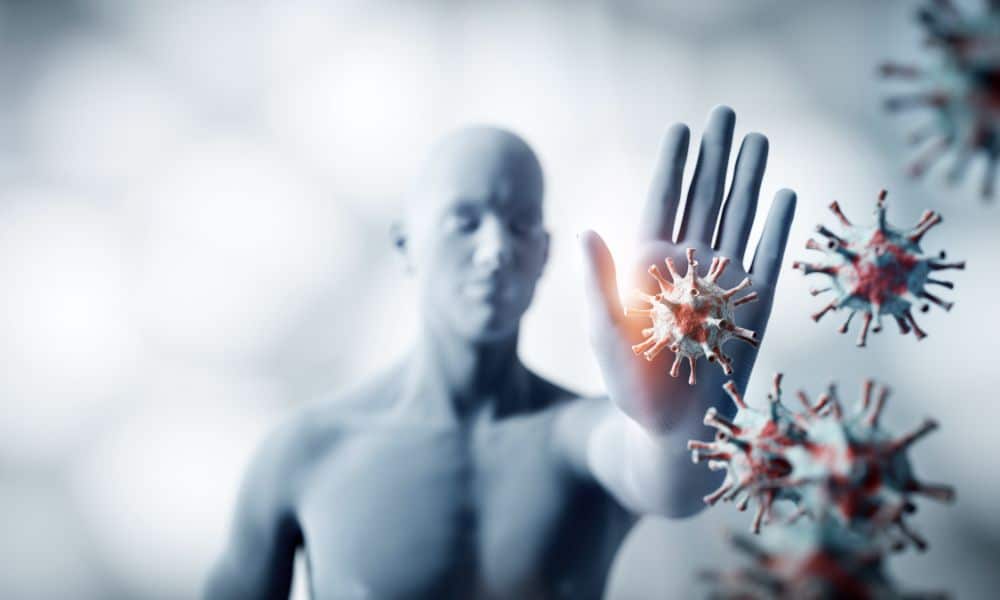Do you want to know more about Alzheimer’s Disease? Have you ever met your close relative or friend who completely forgot you? Or someone unable to communicate and perform their daily tasks. There is a high probability that the person has Alzheimer’s disease. If you want to learn more about it, continue reading the article, as we have discussed it in detail here.
Alzheimer’s Disease
Alzheimer’s disease is a neurological disorder in which brain cell brain cells degenerate and die. It’s a progressive disorder in which there is a continuous decline in thinking, memory, cognitive skills, social skills, and behavior.
As a result, it affects the person’s ability to perform daily tasks and function independently. As a result, it is one of the leading causes of dementia.
Causes and risk factors
Doctors believe that Alzheimer’s disease results from an abnormal buildup of protein in and around brain cells. Studies show that it can be caused by genetic, environmental, and lifestyle factors over time.
Generally, a protein called plaques begins to cluster, has a toxic impact, and reduces cell-to-cell communication. Another protein is the Tau protein, which changes its shape during Alzheimer’s.
Risk factors for the disease include:
- Age
- Family history and genetics
- Down syndrome
- Mild cognitive impairment
- Poor sleep pattern
- Smoking
- Heart conditions and high cholesterol
- Type II diabetes
- Obesity
Symptoms
The key symptom of Alzheimer’s disease is memory loss. Although there are few symptoms and signs at the early stage of the disease. However, as the disease progress patient shows more symptoms; common Alzheimer’s disease side effects are:
- Patient repeat sentence or question
- Forget words, events, conversations, or people.
- Get lost in familiar places.
- Misplace things or forget their place
- Difficulty in multi-tasking
- Difficulty in managing finance and paying bills
- Poor judgment and unable to make a decision
- Difficulty in completing daily tasks
- Personality changes
- Suffer depression, mood swings, and social withdrawal
- Changes in sleeping habits
Stages of Alzheimer’s disease
Although researches show a progressive pattern in the stages of Alzheimer’s disease, each Alzheimer’s patient moves through its stages in their way. When you have a basic knowledge of these stages, taking care of a patient is more manageable.
There are seven stages of Alzheimer’s disease. These includes:
Stage 1: Preclinical Alzheimer’s or no impairment:
Usually, in this stage, the patient doesn’t show any signs or symptoms of the disease. However, changes in their brain start to occur years before a person shows symptoms. As a result, people in this stage act standard and don’t need anyone’s help to do their tasks independently.
Stage 2: Very mild cognitive decline
At this stage, the symptoms start to appear as patients forget about family members’ names, familiar words, or where they place things. As Alzheimer’s is most common in people above 65, it is common to have slight functional difficulties like forgetfulness.
Moreover, people with mild cognitive impairment have found it difficult to judge the amount of time needed for a job or the steps required to complete a specific task.
Stage 3: Mild cognitive decline
It was usually at this stage when people started to show symptoms of Alzheimer’s clearly. This stage lasts up to seven years. After that, close people to the patient may notice signs and symptoms.
Patients experience increased forgetfulness along with slight difficulty in focus and concentration. As a result, there is a noticeable decrease in the patient’s performance, and they cannot find the right words in a conversation. And finally, people started to show changes in their personalities.
Stage 4: Moderate decline
From this point onward, the severity of the disease has increased. Consequently, patients will become more confused and forgetful; thus, they need help to do their daily tasks successfully. Stage 4 of Alzheimer’s lasts about two years. Some of the common symptoms of this stage are:
- Difficulty with simple arithmetic
- Inability to manage finance and bills
- Forgetting details or losing memory regarding family history
- Poor short-term memory
- Difficulty with problem-solving
Stage 5: Moderately severe decline
The onset of stage five marks the beginning of mild dementia, thus, resulting in significant memory deficiencies. This stage lasts about 1 11/2 years and requires a lot of support and assistance with daily activities like preparing meals, bathing, and dressing.
In this stage, patients will lose most of their memory, like their current address, significant events that happen in their life, or current weather.
Stage 6: Severe decline
Stage 6 is also commonly referred to as Middle Dementia, and the patient in this stage requires substantial assistance for day-to-day activities. At this stage, people forget their family members’ names and have little memory of recent events.
Stage six of Alzheimer’s has five noticeable characteristics.
- Patients cannot choose their clothes and need help putting them on.
- Patients will show a decline in oral hygiene and need help adjusting the water temperature.
- Patients will lose control of their bladder and bowel as the disease progresses. Thus they need help with cleaning.
Moreover, at this stage, patients’ memory becomes so weak that they will show personality changes like frustration, fear of being alone, suspicions, or paranoia.
Stage 7: Very severe decline
This is the last and final stage of Alzheimer’s disease and lasts about one and a half years. It is a terminal illness; therefore, people at this stage are near death. In this stage, people will completely lose their ability to communicate.
It further consists of the following sub-stages:
- Speech is limited to only six words.
- In this stage, the speech will decline to only one recognizable word.
- The patient will lose their speed.
- People lose their psychomotor abilities and, thus, cannot sit independently.
- Grim facial movements will replace a smile.
- They cannot hold their head any longer.
At this stage, constant support is required for all activities and tasks like eating and moving.
Alzheimer’s disease treatment
Till now, there is no cure or definitive treatment for Alzheimer’s disease. However, some medications can help to reduce symptoms. But treatment can only start once a doctor makes the diagnosis. Usually, a doctor does a mental, physical, neurological, and imaging test to confirm the condition.
Alzheimer’s disease treatment includes:
● Medicines:
Medication is the most common way to reduce the disease’s progression for as long as possible.
Cholinesterase Inhibitors: This drug helps preserve chemical messengers in the brain for cell-to-cell communication, which is depleted in Alzheimer’s. Moreover, this drug can also help to improve neuropsychiatric symptoms like depression and agitation. Some commonly used cholinesterase inhibitors include galantamine, rivastigmine, and donepezil. It is prescribed to people with early to mild-stage Alzheimer’s.
Its side effects include nausea, diarrhea, vomiting, loss of appetite, and sleep disturbance. However, people with cardiac conditions may suffer from cardiac arrhythmia.
Memantine: This is another helpful drug to improve brain cells’ communication and reduce Alzheimer’s disease symptoms at the moderate to severe stage. Most of the time, it is prescribed in combination with cholinesterase inhibitors. Moreover, it also blocks the effect of chemicals in the brain called glutamate. It is prescribed to people with moderate to severe stage Alzheimer’s.
Its side effects include dizziness, constipation, and headaches. However, these are only temporary and get better later on.
People in the later stage of dementia may develop behavioral and psychological changes. Therefore, they have also been prescribed antidepressants.
● Therapies:
Apart from medication, there are numerous therapies for Alzheimer’s patients to help them live better lives. These includes:
Cognitive Stimulation Therapy: It allows the patient to participate in group activities and exercises that help them with memory and cognitive skills.
Cognitive Rehabilitation: In this method, patients work with trained professionals like occupational therapists to achieve their daily goals. It helps patients to use those parts of the brain that help parts that are not working.
● Natural remedies or creating a supportive environment:
Besides medication and therapies, Alzheimer’s patients need constant care from their relatives, family, and loved ones. Therefore, creating a safe environment for a patient as a part of treatment is essential.
- Use automatic methods for finances and payments.
- Place medication in a safe place and keep track of dosage.
- Keep keys, wallet, mobile, and other values in the same place.
- Install a GPS tracker on the patient’s mobile phone.
- Try to have an appointment on the same day at the same time.
- Use a calendar to track daily activities.
- Remove all unnecessary furniture.
- Reduce mirrors as images in them may frighten or confuse patients.
- Always make sure that patient wears a medical alert bracelet or identity card.
Final words on Alzheimer’s Disease
Alzheimer’s is a progressive disease whose symptoms cannot appear in the early stages. Although there are medications and therapies, there is no definite cure for this disease. All you can do is slow down these symptoms.
Finally, treat these patients with care as they cannot perform their daily tasks. Adopt a healthy lifestyle, avoid hypertension and high cholesterol, and exercise regularly to prevent Alzheimer’s.




